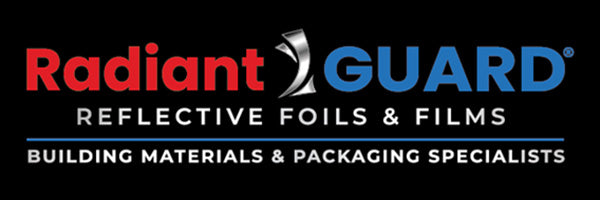A radiant barrier and reflective insulation product are very similar in that they both reflect an average of 95-96% of the radiant heat that strikes their surfaces across and air space. A radiant barrier is a fairly thin product that is about the thickness of a standard business card. A quality radiant barrier has a reinforcement layer in the middle (typically referred to as a woven scrim) to make the product strong and tear resistant.
A reflective insulation product is a thicker product with an insulating middle layer such as fiberglass, foam, or air bubbles. Because of the presence of the small insulating layer, a reflective insulation product by itself achieves a small R-Value typically around 1.0. While this R-Value is for the product only, when installed in certain applications with a dead air space (sealed cavity with no air movement) a much higher R-Value can be achieved. It is the dead air space that provides the additional R-Value and the greater the dead air space, the greater the overall R-Value. To view our measured R-Values for various applications, please see our installation instructions.
Radiant barrier paints are really not true radiant barriers as they fall short of the required reflectivity of a radiant barrier which is 90% or more. They are actually termed as Interior Radiation Control Coatings (IRCC). There are many manufacturers of such products with a wide range of reflectivity from as low as 15% to 80.5%.
As a general rule of thumb for selecting the correct product:
If you are looking to reflect or block radiant heat, use a radiant barrier.
If you also need to achieve an R-Value (typically in order to meet specific building code regulations), OR need to control condensation such as in a metal or steel building, use a reflective insulation product.
For more information on each of these products, see the information below found on our website:



